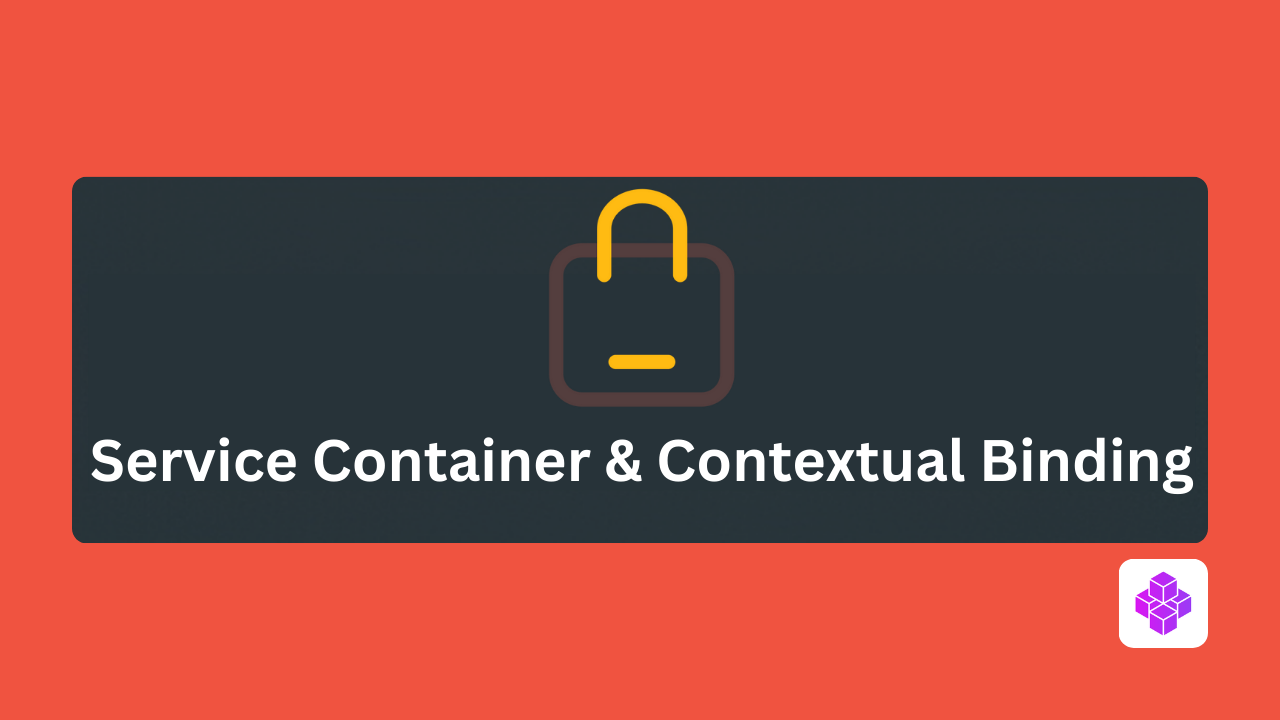Mastering Laravel's Service Container and Contextual Binding
Advanced Dependency Injection Techniques for Clean and Scalable Code

Introduction
Laravel’s service container is one of its most powerful and flexible features. It’s the backbone of dependency injection, allowing you to build modular, testable, and decoupled applications.
While most developers use basic constructor injection, few take full advantage of advanced container features like:
- Contextual binding
- Tagged services
- Binding interfaces to implementations dynamically
- Extending existing bindings
In this article, we'll go deep into the service container and show how to use these features effectively in real-world applications.
The Basics: What is the Laravel Service Container?
Laravel’s service container is a powerful dependency injection container. It manages class dependencies and performs automatic resolution for you.
At its core, it’s responsible for instantiating classes, injecting dependencies, and managing singleton instances.
app()->make(InvoiceService::class);
Behind the scenes, Laravel figures out all the dependencies of InvoiceService and resolves them recursively.
Binding Basics
You can manually bind services to the container using bind() or singleton():
// Transient (new instance every time) app()->bind(PaymentGateway::class, StripePaymentGateway::class); // Singleton (same instance every time) app()->singleton(ExchangeRateService::class, function () { return new ExchangeRateService(config('services.exchangerate.api_key')); });
Contextual Binding: When You Need Different Implementations
Imagine two services depend on the same interface, but each one needs a different implementation. For example:
interface PaymentGateway { public function charge(float $amount); } class StripePaymentGateway implements PaymentGateway { /*...*/ } class PaypalPaymentGateway implements PaymentGateway { /*...*/ }
Now you have two services:
class WebOrderService { public function __construct(public PaymentGateway $gateway) {} } class MobileOrderService { public function __construct(public PaymentGateway $gateway) {} }
By default, Laravel would inject the same implementation everywhere. But with contextual binding, you can tell Laravel to inject a different one depending on the class:
use Illuminate\Support\Facades\App; App::when(WebOrderService::class) ->needs(PaymentGateway::class) ->give(StripePaymentGateway::class); App::when(MobileOrderService::class) ->needs(PaymentGateway::class) ->give(PaypalPaymentGateway::class);
Now WebOrderService uses Stripe, and MobileOrderService uses PayPal. All handled by the container.
Tagged Services: Managing Collections of Services
Let’s say you’re building a notification system with multiple channels:
interface NotificationChannel { public function send(string $message); }
And you have several implementations:
class SlackChannel implements NotificationChannel { /*...*/ } class EmailChannel implements NotificationChannel { /*...*/ } class SmsChannel implements NotificationChannel { /*...*/ }
You can tag these services:
App::bind(SlackChannel::class, function () { return new SlackChannel(); }); App::bind(EmailChannel::class, function () { return new EmailChannel(); }); App::tag([SlackChannel::class, EmailChannel::class, SmsChannel::class], 'notification.channels');
Then resolve them as a group:
$channels = App::tagged('notification.channels'); foreach ($channels as $channel) { $channel->send('System update deployed.'); }
This is extremely useful for pipelines, processors, listeners, and strategies.
Binding Interfaces Conditionally
You can also bind interfaces conditionally using give() and a closure:
App::when(ReportGenerator::class) ->needs(LoggerInterface::class) ->give(function () { return new FileLogger(storage_path('logs/reports.log')); });
This gives you full control over how the container resolves dependencies depending on context.
Extending Existing Bindings
If a class is already bound in the container, you can “extend” its functionality:
App::extend(PaymentGateway::class, function ($service, $app) { return new LoggingPaymentGateway($service); });
This is useful for decorators, wrappers, or logging layers.
Real-World Use Case: Feature Toggles
You can bind different implementations based on environment or feature flags.
App::bind(SearchService::class, function () { return config('features.use_elastic') ? new ElasticSearchService() : new MysqlSearchService(); });
This makes your code testable and swappable without changing the calling logic.
Testing with the Container
During testing, you can override any binding:
$this->app->bind(PaymentGateway::class, FakePaymentGateway::class);
This is a cleaner alternative to mocking services directly in every test. You can even bind contextually inside specific test cases.
Summary
Laravel’s service container is more than just automatic dependency injection. By using features like contextual binding, tagged services, and dynamic resolution, you can:
- Keep your code decoupled
- Easily switch implementations
- Write more testable and flexible services
- Handle edge cases and advanced scenarios with clean architecture
Use the container not just as a helper, but as an architectural tool.
